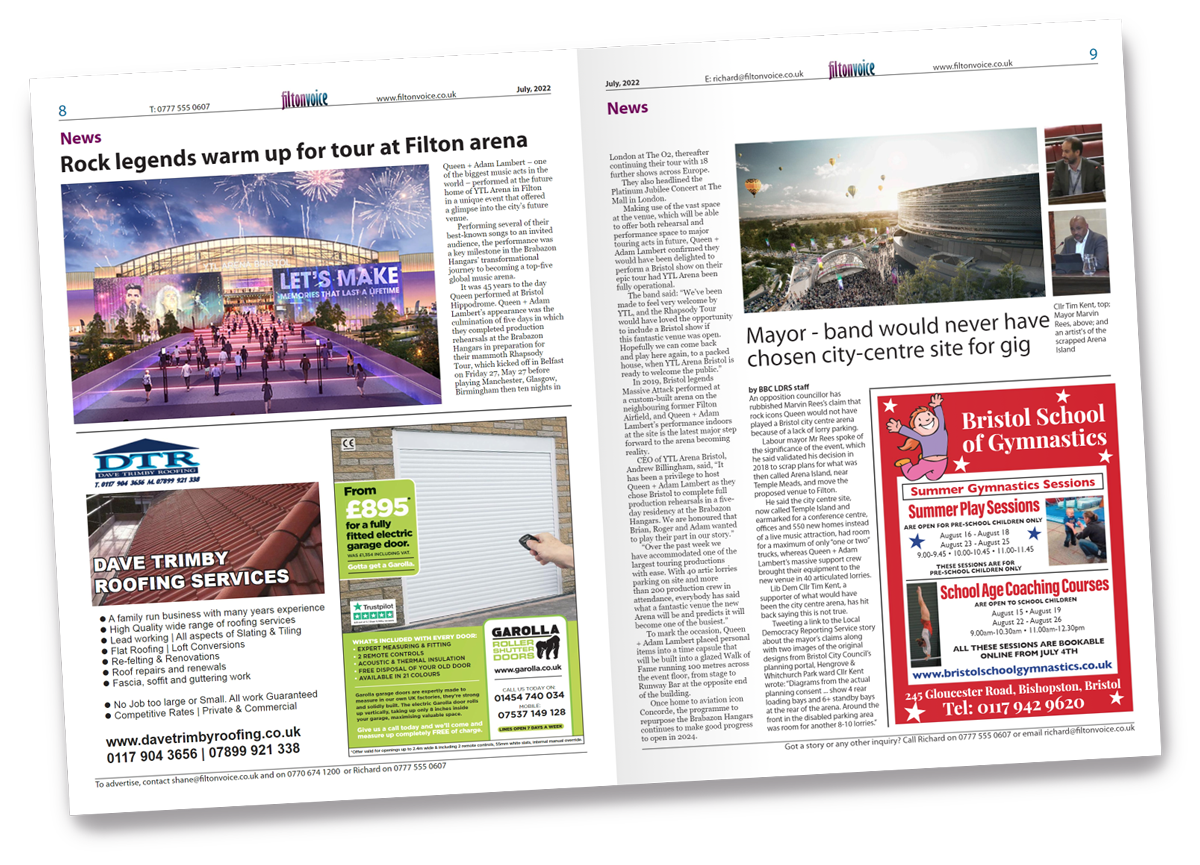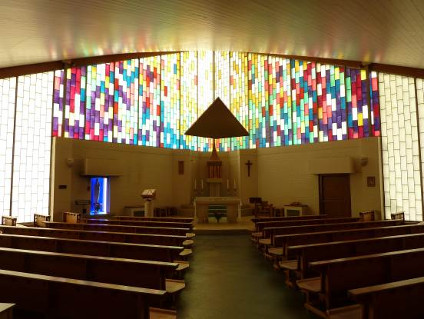By John Wimperis, local democracy reporter: A village’s unusual brutalist church will be knocked down without councillors getting a vote — despite the council’s own conservation officer calling for it to be locally listed.
Built in Batheaston in 1967, the Church of the Good Shepherd is a rare example of brutalist architecture in the Bath area. It closed in March 2020, amid the Covid-19 pandemic and a declining congregation. Now — despite major opposition from the village — the Diocese of Clifton has been given planning permission by Bath and North East Somerset Council to demolish it and build four houses on the site.
Local councillor Sarah Warren (Bathavon South, Liberal Democrat) had called in the application to be considered and voted on by the council’s planning committee. But, despite repeated requests from Ms Warren, the chair and vice chair of the planning committee agreed that the application could be delegated to the council’s planning officers, who then granted planning permission for the plans.
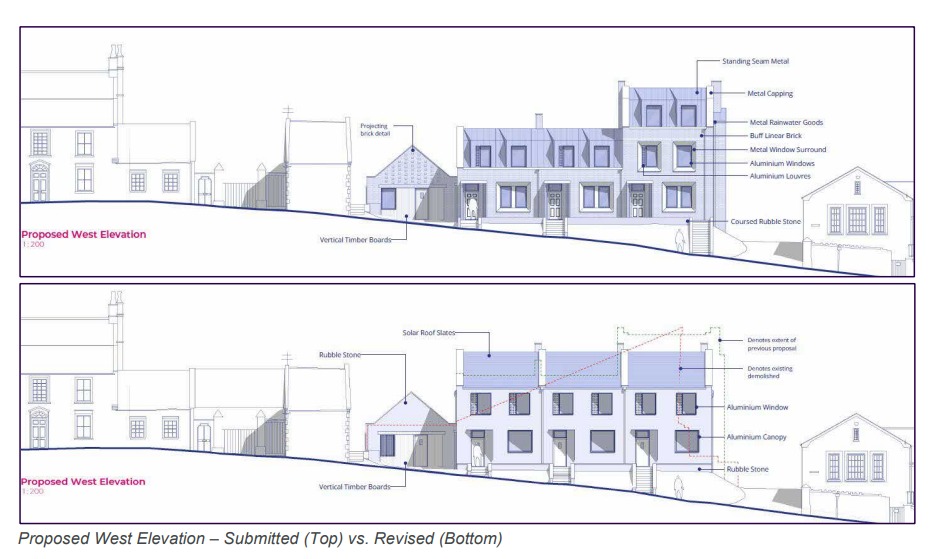
The report by planning officers said the plan to build homes in Batheaston was in accordance with the council’s development plan and that policies to protect buildings of importance “do not provide a strong reason for refusing the development.” The report said: “It is considered that the harms arising from the development do not significantly and demonstrably outweigh the benefits.”
The Catholic church was designed by Bath architect Martin Fisher — who was also behind the design of St Peter and Paul’s in Combe Down — and consists of poured concrete blocks. It does not have a traditional spire, but instead its square roof slopes up to the south east corner, reflecting the tent of a travelling pilgrim. Rather than stained glass, it uses blocks of a material called “Kalwall,” which look almost concrete-like from outside.
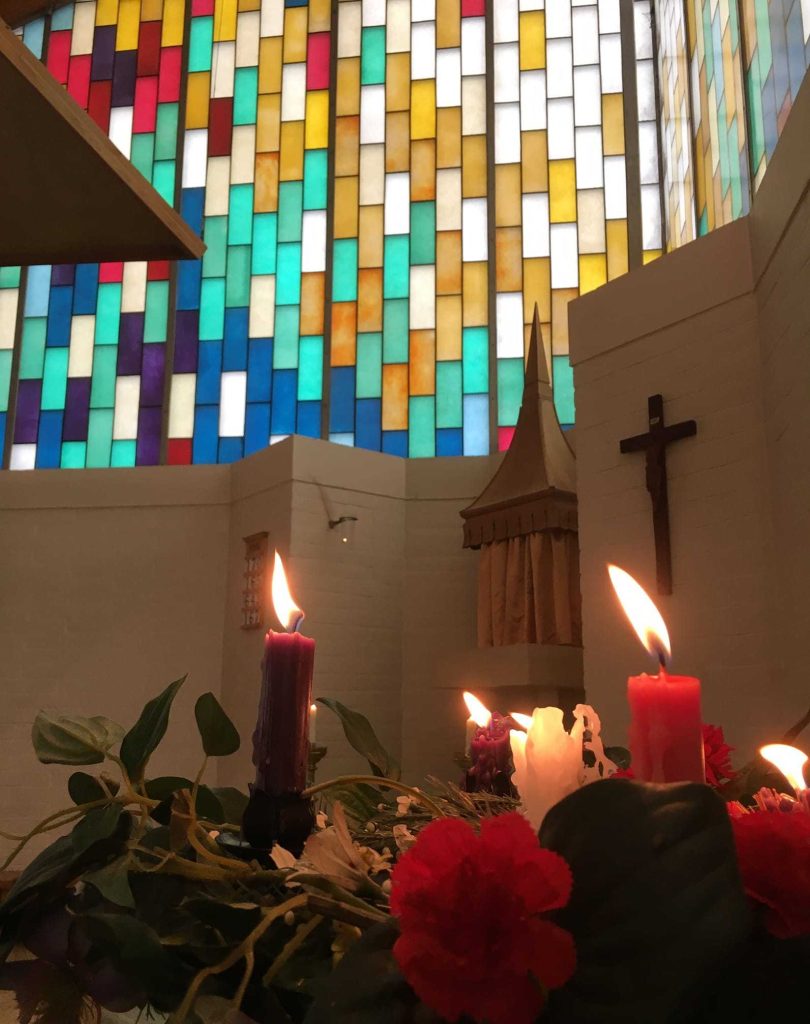
Their coloured pattern can be seen from the inside as the light shines in through the window but is only revealed to people outside when the church is lit up from within. The distinctive church has divided opinion in the village since it was built, with some seeing it as an “important historical statement” and others as an “eyesore” and “the village joke.”
A heritage statement submitted with the Diocese of Clifton’s planning application argued that the “unashamedly contemporary” church’s aesthetic was “difficult to assess” and depended on people’s own views. It said: “As an example of brutalist architecture within Bath it has some value, but as an example of contextual design, it can be argued that this is where the building is least successful.”
But Bath and North East Somerset Council conservation officer Caroline Power disagreed. In her comments, she wrote: “In contrast to the heritage statement, this analysis considers the stark contrast in form and materiality within the conservation area as a deliberate and successful design ploy to make this church stand out as a notable statement of religious strength.”
In a late intervention into the planning process, the Council for British Archaeology wrote to Bath and North East Somerset Council to give their backing to giving the building locally listed status. Listed buildings caseworker Dr Alison Edwards wrote: “The existing building on the site is a characteristic and interesting example of mid-twentieth century religious architecture, which makes a positive contribution to the Batheaston Conservation Area as an illustration of the social and architectural development of the area in the post-war period.”
120 people lodged objections to the plans, with just one person voicing their support. In one objection, Simon Rumble said: “The existing building, whilst quirky, still has significant ‘brutalist’ architectural value. We live in a city that champions its heritage status, so why be so selective when it comes to architecture of heritage, we may one day look back and regret the loss of a design of a particular era.”
Jacqueline Wilkin added: “This would be known as the “sack of Batheaston” if demolition is granted, an iconic building loved by many and disliked by some too. I object to this beautiful building being demolished — can’t it be adapted to provide unique accommodation for perhaps two dwellings?”
Not everyone is a fan of the building. It has been controversial since it was built with some calling it an “eyesore.” But even people who said they would be happy to see the church demolished have raised concerns about the homes the Diocese of Clifton wants to replace it with.
Batheaston Parish Council said the church makes a “meaningful contribution” to the character and identity of the area and called for alterative uses to be found for it. But the Diocese of Cliston said it had mentioned the building to potential occupiers but none had wanted to take it on. It said demolition was “the most sensible route” for reuse of the site.
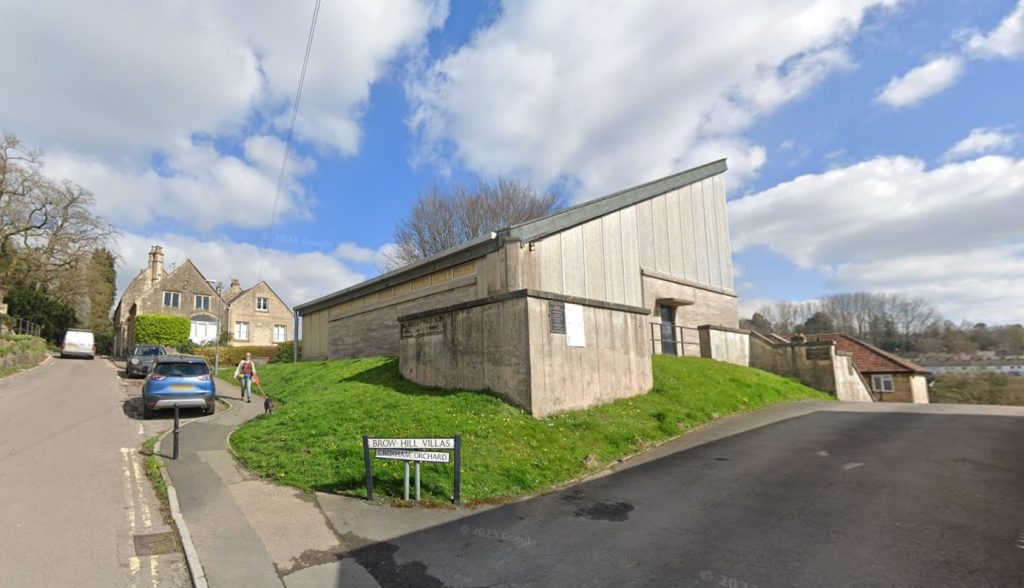
Emblematic of the changing face of the Catholic Church, the Church of the Good Shepherd was the first church in the area built after the major changes of Vatican II and adopted the now iconic brutalist style of the times. Three years later, similar ideas would lead to the construction of Clifton Cathedral in nearby Bristol, a building which was Grade II* listed in 2000.
News Editor Harry Mottram wrote an opinion piece when the plans were first announced – in defence of 20th century buildings – and since then the 1930s Fire Station is also set to be knocked down: https://bathvoice.co.uk/2024/02/13/bath-voice-news-catholic-church-and-classic-example-of-1960s-architecture-is-set-to-be-demolished-to-make-way-for-houses/

Bath Voice and Local Democracy Reporters
The journalists are funded by the BBC as part of its latest Charter commitment, but are employed by regional news organisations. A total of 165 reporters are allocated to news organisations in England, Scotland, Wales and Northern Ireland including Bath Voice. These organisations range from television and radio stations to online media companies and established regional newspaper groups. Local Democracy Reporters cover top-tier local authorities, second-tier local authorities and other public service organisations.
Bath Voice Monthly Newspaper is distributed free to thousands of homes and some supermarkets – distributed from the first of the month. Harry Mottram is the News Editor
Email him at news@bathvoice.co.uk Bath website: https://bathvoice.co.uk/news/
Bath Facebook: https://tinyurl.com/bdtf2kep Also on Twitter: https://twitter.com/bath_voice And Bluesky @bathvoicenews.bsky.social And also on Instagram https://www.instagram.com/harrymottram6/
Read the newspaper online at :https://issuu.com/bathvoice
To advertise to thousands of Bathonians call Shaun on 07540 383870 or email him on sales@bathvoice.co.uk

